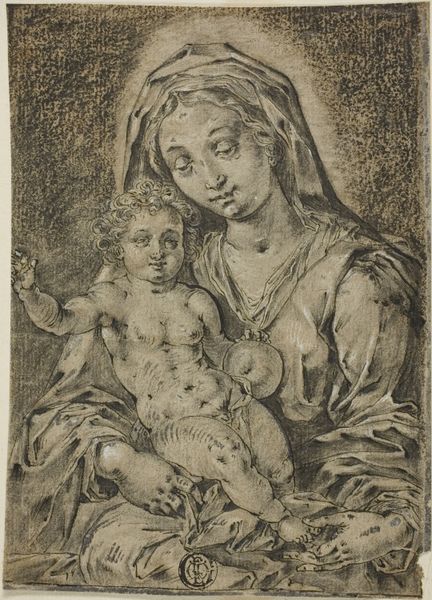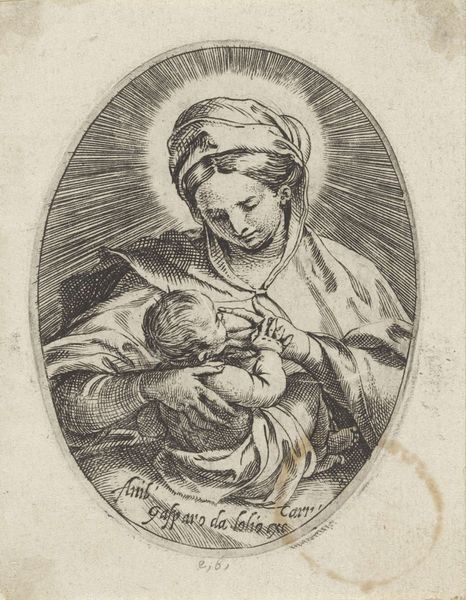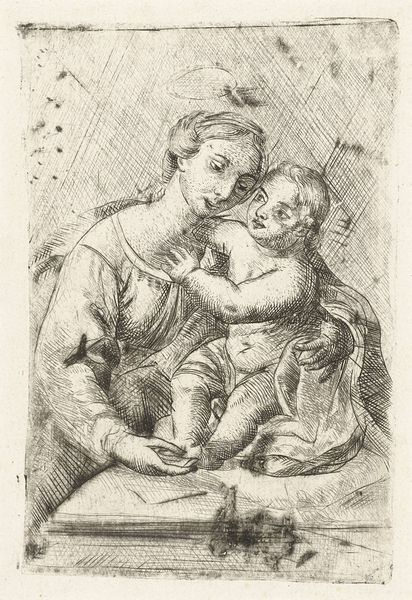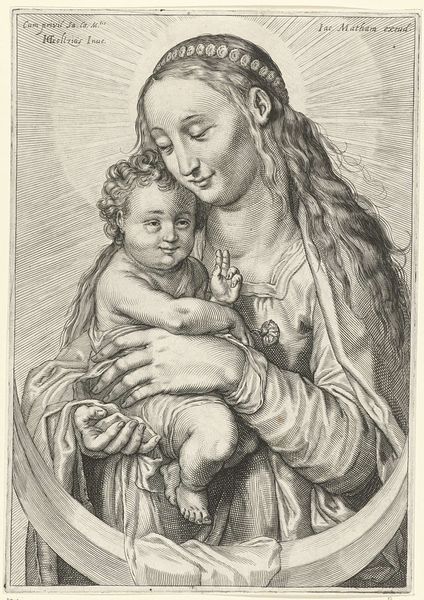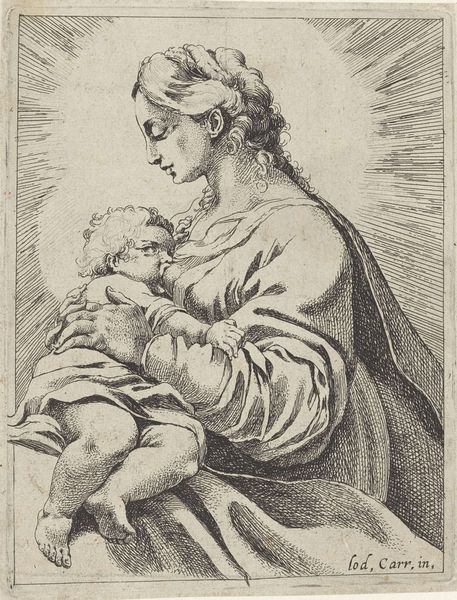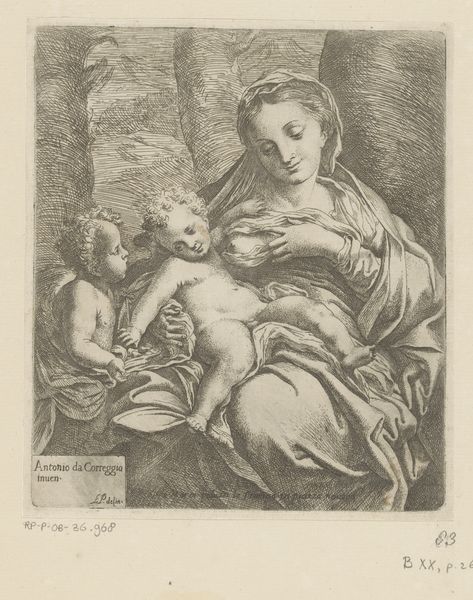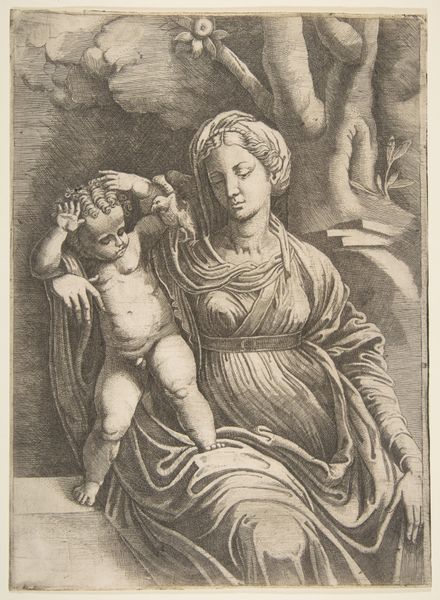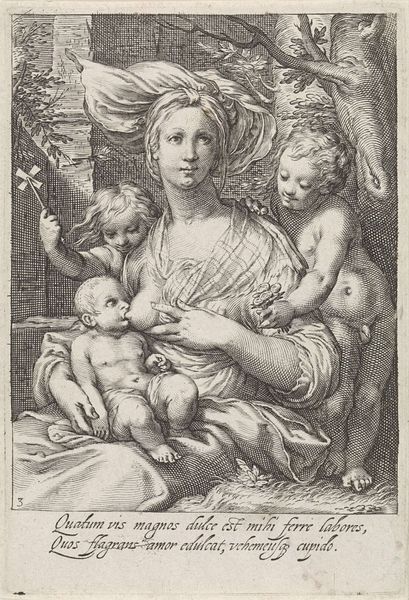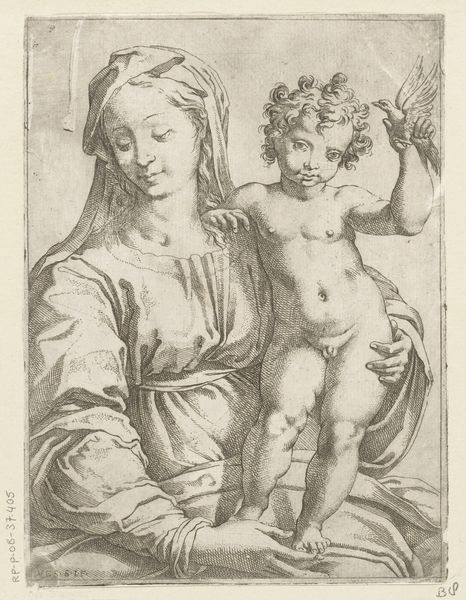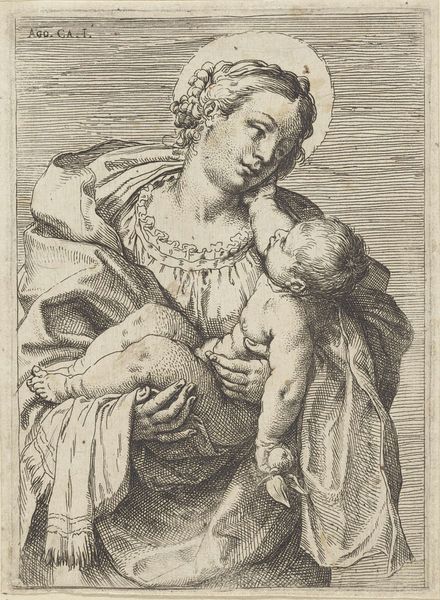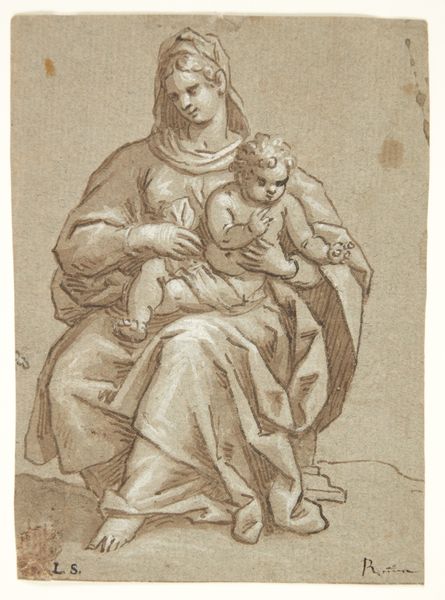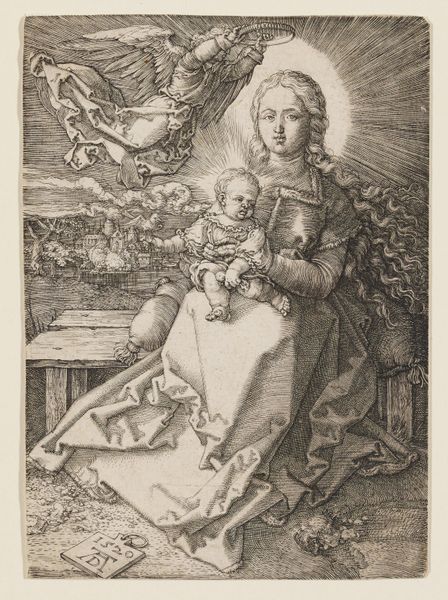
print, engraving
# print
#
figuration
#
line
#
northern-renaissance
#
engraving
Dimensions: height 45 mm, width 38 mm, height 46 mm, width 40 mm
Copyright: Rijks Museum: Open Domain
Curator: Welcome. Before us we have Hendrick Goltzius's engraving, "Maria met Christuskind op een halve maan," which translates to "Mary with Christ Child on a Crescent Moon," created between 1593 and 1597. Editor: The immediate feeling I get is one of gentle protection, a delicate intimacy captured within a defined, almost celestial space. The softness is striking given that it's an engraving. Curator: Absolutely. Goltzius was a master of line. The Northern Renaissance printmaking scene, particularly in the Netherlands, saw printmaking becoming a powerful tool for disseminating religious imagery and reinforcing social values. Prints democratized art in a way never seen before. Editor: The crescent moon under her feet… That's an ancient symbol, often linked to female deities, now integrated to represent Mary as Queen of Heaven, triumphant over darkness, as in the Book of Revelation. There’s an incredibly strong connection to the divine feminine here. Curator: Precisely. This iconographic synthesis reflects the Catholic Church's strategy during the Counter-Reformation, visually reaffirming core beliefs to combat Protestant challenges to established doctrines. The public function was always to inspire piety and reaffirm the Church’s power. Editor: And look how Christ Child holds an apple! The association with the Fall, with original sin… It's a heavy weight for such a small figure to carry. But simultaneously, it positions him as the redeemer from that very sin. It’s complex, the symbols layer meaning upon meaning. Curator: This layering was intentional, engaging a diverse audience from different social strata. Religious prints circulated widely and acted as devotional objects and powerful visual propaganda. Editor: It's incredible how Goltzius managed to imbue such profound symbolism into such a small, finely detailed work. It really makes you think about the power that these types of visual representations hold. Curator: Indeed. Studying pieces like this gives insight into how artists use established symbols and imagery for specific ends and within the demands and expectations of institutions. Editor: A potent blend of faith and craft that resonates even now, so many years later. Curator: I agree; it's the intersection of cultural forces that creates such captivating narratives.
Comments
No comments
Be the first to comment and join the conversation on the ultimate creative platform.
